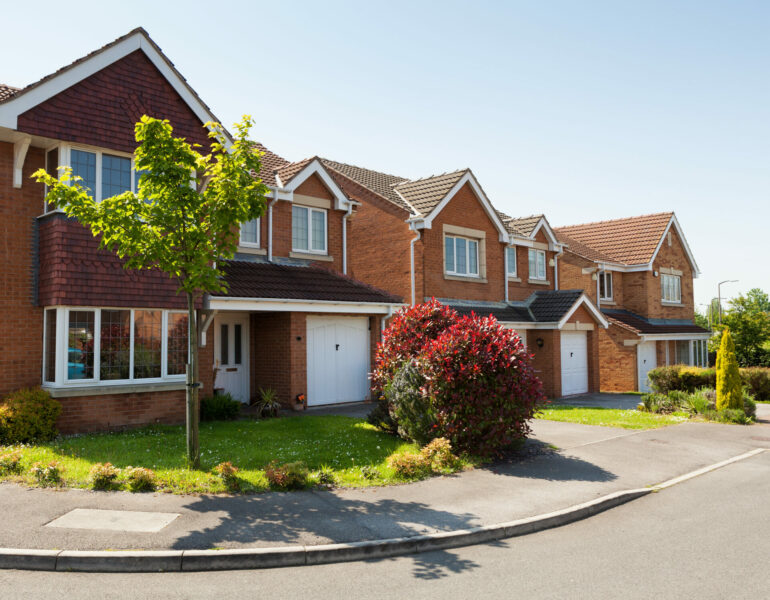The average price of a property in the UK hit a new record high of £272,992 in November, the latest house price index from the Halifax has revealed.
The Hali also found that quarterly house price inflation is now at the strongest level since late 2006.
Overall house prices are up 8.2% on an annual basis and 1% over the month.
Also of note was an uptick in prices in Wales which saw Welsh average property price breaks past £200,000 for the first time ever.
Russell Galley, managing director, Halifax, said: “UK house prices rose again in November, with the value of the average property increasing by another 1%, or £2,808, tipping the annual rate of inflation up to 8.2%. This is the fifth straight month that average house prices have risen, with typical values up by almost £13,000 since June, and more than £20,000 since this time last year.
“On a rolling quarterly basis the uptick in house prices was 3.4%, the strongest gain since the end of 2006, bringing the new average property price up to a record high of £272,992. Since the onset of the pandemic in March 2020, and the UK first entering lockdown, house prices have risen by £33,816, which equates to £1,691 per month.
“The performance of the market continues to be underpinned by a shortage of available properties, a strong labour market and keen competition amongst mortgage providers keeping rates close to historic lows. Those taking their first step onto the property ladder are also playing an important role in driving activity, with annual house price inflation for first-time buyers at 9.1% compared to 8.8% for homemovers.
“We see this across different property types too, with double-digit annual price inflation for flats (+10.8%) over the last year compared to slower gains for detached properties (6.6%). This could suggest the ‘race for space’ is becoming less prominent than it was earlier in the pandemic, with industry data also showing the overall number of completed transactions has fallen back since the end of the Stamp Duty holiday.
“Looking ahead, there is now greater uncertainty than has been the case for quite some time, with interest rates expected to rise to guard against further increases in inflation. Economic confidence may be also be dented by the emergence of the new Omicron virus variant, though it remains far too early to speculate on any long-term impact, given insufficient data at this stage, not to mention the resilience the housing market has already shown in challenging circumstances.
“Leaving aside the direct impact of a possible resurgence in the pandemic for now, we would not expect the current level of house price growth to be sustained next year given that house price to income ratios are already historically high, and household budgets are only likely to come under greater pressure in the coming months.”

Regions and nations house prices
Wales remains by far the strongest performing nation or region in the UK with annual house price inflation of 14.8%. Buying a property in Wales has never been so expensive, with the average house price breaking through the £200,000 barrier for the first time in history (average price of £204,148). Northern Ireland also continues to record double-digit annual growth (10.0%, average house price of £169,348).
House prices also continue to rise in Scotland, with the average property now up 8.5% year-on-year, with the average price of £191,140 also the most expensive on record. In England, the North West remains by far the strongest performing region (+11.4%), which is its highest rate of growth since 2005 (average house price of £209,287).
London continues to lag the rest of UK in its rate of house price growth, with annual inflation of just 1.1%, though this was up slightly from October. However at an average of £521,129 properties in London continue to be much more expensive than in all other parts of the country.
Jeremy Leaf, north London estate agent and a former RICS residential chairman, said: “Halifax borrowers continue to demonstrate the impressive resilience seen across the market, even after taking advantage of the stamp duty concession became impossible.
“However, those savings were relatively small beer for many compared with the gains that could be made from locking in their mortgages to present record low fixed levels before rates inevitably rise.
“On the ground, demand is not consistent across the board, demonstrated most clearly for us in the multiple offers received on the rare occasions three and four-bedroom family houses become available. Flats are making a bit of a comeback now that post-furlough working and commuting patterns have been formalised for many, at least in the medium-term.”
Tomer Aboody, director of property lender MT Finance, added: “With the highest growth in property prices in more than 15 years, there is continued confidence among buyers. Lack of stock means values are being pushed up as buyers take advantage of low interest rates and are prepared to push their personal boundaries when it comes to how much they are happy borrowing.
“More space is still the main requirement for buyers, with quality homes and locations most in demand.
“Although Wales has seen the highest growth in prices and London the lowest, this has to be put in perspective with Wales at the lower end of the value spectrum and therefore more affordable in the first place. For many people, property ownership in London remains out of reach, despite more subdued growth.
“Even with the new Covid variant and possible interest rate increases on the horizon, market sentiment remains impressively strong and resilient.”



